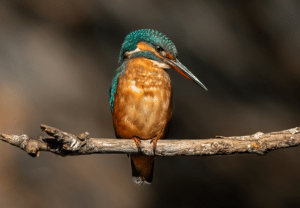By Paul McKay
WINTER IS on the way. By the time you read this, the cooler nights and the autumn rain will have turned the summer vegetable plot into a sorry state. Tomatoes and cucumbers will have begun to rot and the snails should be having a field day on any leafy vegetables. However, the plants to leave intact are sweet peppers.
Despite their exotic appearance, sweet peppers can continue to thrive, producing red peppers up to, and beyond, Christmas. If you have any piri-piri peppers still red on the bush, now is the time to take them off and dry them indoors or in the sun.
Unlike northern Europe, the home veg gardener is not redundant until next spring. The winter warmth we have in the Algarve, along with the rain, can sometimes make winter gardening a much more attractive proposition than summer gardening, particularly as water can become scarce.
October is still a good time to transplant cabbage seedlings, which will look after themselves until you are ready to eat them in the early spring. Seedlings can still be bought at Algarve markets, costing only one euro for a dozen or more plants. November is the time to sow peas and broad beans, which will give a good crop, just when you need them, from March to May. Potatoes can be planted from late December through until the end of January, providing you with new potatoes in April, often with no need to water. Now is also a good time to sow salsa (loose leaf parsley), it will grow like a weed throughout the cooler months and can be chopped down as you need it, only to re-sprout again.
Garlic – a simple crop to grow
Garlic, once exotic to the English, is now virtually a staple. It can be added to many recipes, used fresh or dried all year round. It is one of the simplest crops to grow, requiring minimal effort from the gardener.
Garlic is grown from garlic cloves which, when planted in the ground, sprout, forming a new plant. One can never be sure if supermarket garlic has been treated in some artificial way, so it is advisable to buy dried cloves from a market or to ascertain that it has not been radiated. The bulb is split into its cloves and you should plant each clove in fairly fertile soil around 10cm from the next, around five cm deep. Ideally, this should be done on a sunny day when the soil is warm and moist, not waterlogged. You can plant any day from now until the end of November.
If we get a prolonged dry period, give the patch a watering to keep the soil moist, otherwise sit back and watch. The shoots, which look like onion shoots, emerge in a few weeks – rub your fingers along them and smell – there is no mistaking garlic. Keep the area free from weeds.
Sometime around May, or early June, you will see the tips of the plant begin to turn yellow, then brown. Avoid watering if you can and leave for a few more weeks. Then, feel around under the soil to see if you have a fully formed bulb. The bulbs should be dug up gently. Shake off the excess soil then lay them on the ground in the sun to harden for one day. They can then be collected, made into plaits and hung to dry in the sun. They should store for about a year.
If, like me, you are of an impatient nature, you can cut off some of the stems and use those fresh in salads or cooking. Similarly, the freshly dug bulbs can be used fresh, having a stronger, more intense flavour. Happy gardening.
If you have any gardening nightmares or successes to share, e-mail Paul at pauljohnmckay@yahoo.co.uk

























